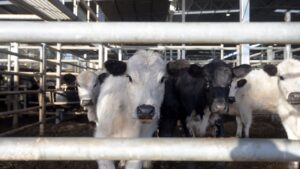
Last week, the peak body for equestrian sport in Australia suspended a prominent member following the release of footage allegedly depicting Australian Olympic dressage rider Heath Ryan whipping a horse over 40 times. The incident has reignited the debate over the use of whips in equestrian sports, with many calling for a complete ban.
Ryan confirmed his presence in the footage, which reportedly dates back two years. He explained that the horse, named Nico, belonged to a friend who had been hospitalized due to serious injuries inflicted by the animal. Ryan described Nico as a “problem child” who was on the brink of being sent to slaughter. As an experienced trainer, Ryan intervened in hopes of “salvaging” the horse.
The Controversial Footage
The footage shows Ryan mounted on Nico, forcefully using the whip. The sound of the whip cutting through the air and striking Nico’s flesh is clearly audible. Despite Nico kicking out several times in response, the whipping continues, with the horse appearing “shut down”—a term used to describe a horse that seems unable to comprehend how to stop an adverse experience.
Whipping causes horses pain, particularly in sensitive areas like the gluteal region, which was repeatedly struck in this instance. This incident is not isolated; similar controversies have arisen in the past, highlighting the ongoing debate about animal welfare in equestrian sports.
Historical Context and Previous Incidents
In July 2024, footage emerged of three-time Olympic dressage gold medalist Charlotte Dujardin repeatedly whipping a horse on the hind legs. This led to the International Equestrian Federation fining her CHF 10,000 (approximately A$18,867) and imposing a 12-month suspension. More recently, in May 2025, the RSPCA prosecuted trainer Liandra Gray for striking a horse over 40 times with a padded racing whip. A Tasmanian court ruled that Gray’s actions constituted cruelty.
Equestrian Australia’s national dressage rules explicitly forbid excessive use of whips. Despite this, Ryan defended his actions, claiming he acted in Nico’s best interest. After an undisclosed period, Nico was re-homed and, according to Ryan, is now thriving in a new environment.
Debating the Ethics: Consequentialism vs. Animal Welfare
Ryan’s justification for his treatment of Nico hinges on consequentialism—the idea that the morality of an action is judged by its outcomes. In this case, avoiding slaughter and ensuring Nico could continue to be ridden were seen as positive outcomes. However, this raises ethical questions about what constitutes a “good” outcome and whose standards are being applied.
Critics argue that such justifications reflect a culture that prioritizes human utility over animal welfare, ignoring the fact that horses are sentient beings capable of suffering. The relationship between rider and horse is often romanticized as a partnership, yet horses have little choice in the matter, being controlled through aversive stimuli.
Understanding Problem Behavior in Horses
The label of “problem child” for Nico may stem from a misunderstanding of equine behavior. Horses learn to respond correctly when aversive stimuli, like pressure from a rider’s heels or a whip, are removed. If these cues are misused, horses can become confused, stressed, and exhibit unwanted behaviors, which can quickly become habitual.
Nico’s behavior likely reflects a combination of stress, fear, and inconsistencies in training. These factors can impair a horse’s ability to learn and adapt, leading to the development of undesirable behaviors.
The Call for Change
This incident with Nico likely taught him to associate humans with fear and pain, reinforcing outdated and unethical training methods. Scientific evidence supports the modification of unwanted behaviors in horses without resorting to violence. Organizations like the International Society for Equitation Science (ISES) and the Federation of Veterinarians of Europe have emphasized the risks of aversive training stimuli, advocating for more humane methods.
ISES has developed a set of 10 principles for training even the most challenging horses, highlighting that violent methods are neither necessary nor ethical. The current discourse suggests a growing consensus that equestrian sports must evolve to prioritize animal welfare over tradition.
As the debate continues, the equestrian community faces a pivotal moment. The choices made now will shape the future of the sport and its ethical standards, potentially leading to significant reforms in how horses are trained and treated.







